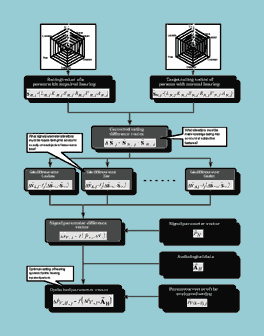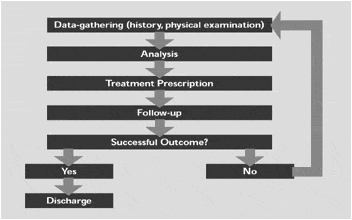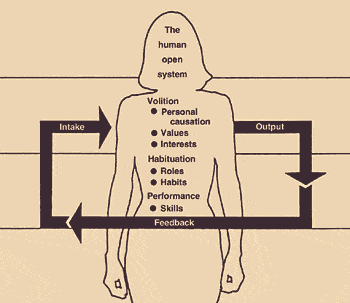Traditionally, hearing loss has been steeped in stereotypes. It typically conjures up images of elderly people, isolated from society and unable to engage in normal life. Picturing a person with hearing loss as someone who is hip, successful, and proud is an anamoly.

|

|

|
But not if the Canadian Hearing Society (CHS) has its way. The 62-year-old Toronto-based organization has launched a massive 3-year public awareness campaign consisting of television and magazine advertisements and an Internet marketing effort, all across Canada. The two-pronged campaign includes advertisements seeking to debunk the stereotype of “deaf and dumb” people, as well as a separate advertisement series that challenges the notion of people with hearing loss being on life’s fringes. The first series, “Deaf Not Dumb,” features photographs of actual deaf people listing their accomplishments and passions and ending with the statement: “I’m deaf. But I’m definitely not dumb.”
The other series, “IWearEarWare,” focuses on professional fashion models who appear hip, trendy, and happy while wearing hearing instruments. The ads sport the tagline, “IWearEarWare…for the hard of hearing, not the hard of living.”
Changing Attitudes
“Basically, we set out to change people’s attitudes, because we felt that the stigmas associated with being deaf or hard-of-hearing are so entrenched that if we didn’t tackle them and try and eradicate them, we would never really expand the market,” says Susan Main, director of marketing communications for CHS. “Ultimately, it’s consumers that make the decision to go to their physician and ask about their hearing loss, or go to the hearing care professional and get their hearing checked. We have to get to the consumer.”
Lisa Thomas, president of Toronto-based hearing aid battery distributor Scicore, and a CHS board member, describes that goal in even more detail. “We need to reach the people whose lives will be most enriched by what our combined industries have to offer, be it ours and the charity, or manufacturers and their product, or audiologists and hearing instrument specialists. Basically, we want to reach the 98% of people who we haven’t gotten through to yet.”
The program, which Thomas says cost CHS a little under $1 million, also includes three print ads and two 15-second television spots that are currently running throughout Canada. “We’ve targeted some national business magazines, like McClean’s, which is the Canadian version of Time magazine,” says Thomas. “So far, the response has been extremely positive.”
In addition, the advertisements will appear in high-profile Canadian magazines such as Reader’s Digest, Canadian Business, and Canadian Living.
Incidentally, one-third of CHS’ 21 board members are either deaf or hard of hearing. The organization receives the majority of its funding from government contracts and grants, with the remainder coming from service fees and product sales, federal grants, and charity and fundraising work.

|

|
Separate Messages
According to Main, the idea of creating two separate advertising campaigns was an important factor in the genesis of the process. “We decided we had to deal with deafness and hearing loss separately, because the stigmas that accompany each are different,” she says.
For example, the Hard of Hearing campaign emphasizes the hearing instrument, perhaps the most visible symbol for that community. “The stigma symbolized by the hearing aid is that anyone who wears one is old and lives on the fringe, disengaged from life. That’s why we decided to set the hearing aid in a fashion context to totally tackle this stereotype. We’ve portrayed pretty, hip, cool, young, fashionable people wearing hearing aids,” says Main. “We’re trying to make people think differently about both hearing loss and deafness.”
However, both Main and Thomas admit that the initial steps in the campaign process were labored, not easy. “The biggest challenges we had were finding the money to devote to this cause, and coming up with a message that everyone on the board could agree on,” says Thomas. “And on top of that, we were faced with trying to convince that board to put the money into the advertising, with no guarantee of any results for them. CHS is a service provider traditionally, whose main task is delivering services to deaf and hard of hearing people. Advocacy work such as this campaign is definitely not our main business, so it was, in the end, courageous for our board to realize the worth of this program.It was a big leap of faith for them to invest significant money into a project that’s not our main business.”
Demographics
Once the two campaigns were created, CHS realized that it had to target a certain demographic. “It is interesting, because at first we simply wanted to reach the general mass consumer audience,” says Main. “But we soon came to the conclusion that hearing loss not only covers all age groups, but specifically we decided to zero in on the over-40 female who makes the buying decisions for herself, her children, and her spouse. These are the people that we are getting the most feedback from.”
Rebranding Hearing Aids
The program, which is currently one-third of the way through its planned 3 years, will not likely change any images automatically, says Main. “We know that attitudes don’t change overnight,” she says. “We will build on this campaign in whatever ways we can. But it is most certainly going to be a long road, full of challenges. What we are trying to do here is rebrand hearing aids, and that is a monumental task, which is why we need to keep driving that home in different ways—as many different ways as we can.”
Thomas adds that CHS is also trying to destroy the many negative stereotypes that face the huge Canadian population of hard-of-hearing and deaf people. “That cliche of being ‘deaf and dumb’ is so horrible,” she says. “The crux of our campaign is that deaf people, and those with hearing loss, are capable of doing anything a hearing person can do. The negative stereotype is truly one of society’s myths that has to be dispelled.”
As Main points out, such entrenched myths typically involved images of older people who have been forced to retreat to the outskirts of society. “It is amazing that people think that way,” she adds. “And it also partially explains why people who suspect they have hearing loss are afraid to seek treatment. We have seen studies that show people wait an average of 10 years before taking action about hearing loss. Again, these are the people we hope to reach.”
US Market
Now that the program is underway throughout Canada, both Main and Thomas agree that the US could be the next focus for CHS. “We are really hoping to partner with US organizations so we can get this message across to an even wider group of people,” says Main. “In fact, the US market would be even more of a challenge, since the population is so much larger.”
One group they are hoping to partner with in the US is the Hearing Industries Association (HIA), based in Washington, DC. “We recently went to one of their meetings, to positive reviews,” says Thomas. As a result, HIA could be interested in marketing the campaign, though that talk is speculative at this point.
Positive Feedback
Although it is too soon for CHS to draw any hard conclusions, financial or otherwise, about the impact of “iwearearware,” Main says the one avenue which has indeed provided the group with virtually instantaneous feedback is the Web site, www.chs.ca.
“We have had an amazing number of responses from people who have seen the campaign,” she says. “We have gotten emails from as far away as Germany and the Fiji Islands. And many of them are sharing their own tales of hearing loss. So we are striking a nerve.”
She adds that feedback is also coming from hearing care professionals themselves. “We are receiving requests from audiologists and even physicians who want these posters to put up in their waiting rooms,” she says. “To us, those are the kinds of things that make the project worth it.”
Ben Van Houten is associate editor of The Hearing Review magazine.



